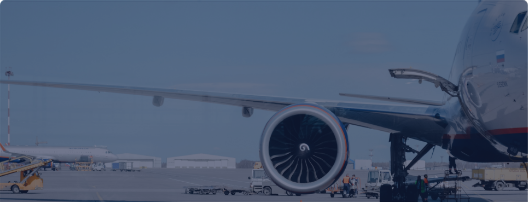Posted on March 20, 2023 linda strong aerospace
Similar to the way that cars use tires for shock absorption, airplanes also use inflated tires to absorb the force of landing on the runway. However, unlike the tires on cars and trucks, airplane tires are rarely inflated with air. Instead, most airplanes feature nitrogen-inflated tires that offer several benefits where oxygen-filled tires fall flat. Some key benefits of using nitrogen include its non-flammable nature and its ability to keep out moisture, in addition to protecting against corrosion and promoting consistent pressure. For these reasons, it has become preferred within a number of heavy-duty applications like car racing, construction, and within the aviation industry.
Since regular atmospheric air contains oxygen, nitrogen, and water vapor, if it were used to fill airplane tires, it could introduce moisture. While this is not a major concern for most automobiles, moisture in an airplane tire could cause damage that results in costly downtime, which is especially pernicious in aircraft operations. Since pure nitrogen gas does not contain water vapor, the risk of introducing moisture within the tire is minimized. Additionally, a fully inflated tire is less likely to accept moisture from the surrounding air.
Because it keeps moisture out, nitrogen protects tires against corrosion. If moisture were to be introduced, it could cause the metal components within the tire to oxidize, causing it to corrode from the inside out. In comparison with oxygen, which is highly reactive and will tend to bind with hydrogen to produce water, nitrogen molecules are self-sustained, meaning they are much less reactive to surrounding molecules. As such, nitrogen provides a helpful alternative to oxygen that lessens the risk of corrosion within a tire.
Another reason that nitrogen is used to fill airplane tires is because it promotes consistent pressure. The pressure of airplane tires may vary depending on the altitude, because as the airplane ascends, the surrounding air pressure decreases. That being said, the degree by which the pressure within the tire changes is far less in nitrogen-filled tires than air-filled ones. Part of the reason for this is that nitrogen does not contain moisture which could otherwise freeze within the tire, causing major pressure changes. Nitrogen molecules are also much larger than oxygen molecules, meaning that it is harder for them to escape through the molecular structure of the tire itself.
Finally, it is worth noting that nitrogen is a nonflammable gas. Pure oxygen or hydrogen can be moisture-free as well, but both are highly-flammable gasses that can ignite when exposed to a heat source. Since airplane tires are exposed to unprecedented amounts of friction and heat, it is crucial that they are built with non-flammable materials. Nitrogen offers a safe, plentiful alternative that eliminates the chance of a tire igniting.
In addition to providing our customers with useful blogs like this, Aviation Sourcing Solutions is a leading supplier of all the parts you could possibly need for your aircraft, including a wide selection of aircraft tires, aircraft landing gear, aircraft avionics, and more. When you are in need of quality tested products without delay, we invite you to explore our various catalogs of available parts which you can narrow down further using our search tool and relevant filters. With a team of industry experts that are familiar with part standardization and document verification, we are more than happy to assist you with finding procurement solutions that match even the strictest deadlines and requirements. For more information, you may contact us at any time via phone or email; we are available 24/7x365!

 The only independent
The only independent



“We Proudly Support Intrepid Fallen Heroes Fund that serves United States Military Personal experiencing the Invisible Wounds of War : Traumatic Brain Injury (TBI) and Post Traumatic Stress (PTS). Please visit website (www.fallenheroesfund.org) and help in their valiant effort”.
We Hope that You Will Visit Us Again the Next Time You Need Aircraft Parts and Make Us Your Strategic Purchasing Partner.
Request for Quote